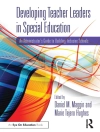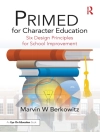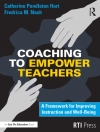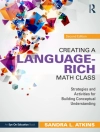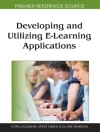An Introduction to Data Science is an easy-to-read, gentle introduction for advanced undergraduate, certificate, and graduate students coming from a wide range of backgrounds into the world of data science. After introducing the basic concepts of data science, the book builds on these foundations to explain data science techniques using the R programming language and RStudio® from the ground up. Short chapters allow instructors to group concepts together for a semester course and provide students with manageable amounts of information for each concept. By taking students systematically through the R programming environment, the book takes the fear out of data science and familiarizes students with the environment so they can be successful when performing advanced functions.
The authors cover statistics from a conceptual standpoint, focusing on how to use and interpret statistics, rather than the math behind the statistics. This text then demonstrates how to use data effectively and efficiently to construct models, predict outcomes, visualize data, and make decisions. Accompanying digital resources provide code and datasets for instructors and learners to perform a wide range of data science tasks.
Table of Content
Preface
About the Authors
Introduction: Data Science, Many Skills
What Is Data Science?
The Steps in Doing Data Science
The Skills Needed to Do Data Science
Chapter 1 • About Data
Storing Data—Using Bits and Bytes
Combining Bytes Into Larger Structures
Creating a Data Set in R
Chapter 2 • Identifying Data Problems
Talking to Subject Matter Experts
Looking for the Exception
Exploring Risk and Uncertainty
Chapter 3 • Getting Started With R
Installing R
Using R
Creating and Using Vectors
Chapter 4 • Follow the Data
Understand Existing Data Sources
Exploring Data Models
Chapter 5 • Rows and Columns
Creating Dataframes
Exploring Dataframes
Accessing Columns in a Dataframe
Chapter 6 • Data Munging
Reading a CSV Text File
Removing Rows and Columns
Renaming Rows and Columns
Cleaning Up the Elements
Sorting Dataframes
Chapter 7 • Onward With RStudio®
Using an Integrated Development Environment
Installing RStudio
Creating R Scripts
Chapter 8 • What’s My Function?
Why Create and Use Functions?
Creating Functions in R
Testing Functions
Installing a Package to Access a Function
Chapter 9 • Beer, Farms, and Peas and the Use of Statistics
Historical Perspective
Sampling a Population
Understanding Descriptive Statistics
Using Descriptive Statistics
Using Histograms to Understand a Distribution
Normal Distributions
Chapter 10 • Sample in a Jar
Sampling in R
Repeating Our Sampling
Law of Large Numbers and the Central Limit Theorem
Comparing Two Samples
Chapter 11 • Storage Wars
Importing Data Using RStudio
Accessing Excel Data
Accessing a Database
Comparing SQL and R for Accessing a Data Set
Accessing JSON Data
Chapter 12 • Pictures Versus Numbers
A Visualization Overview
Basic Plots in R
Using ggplot2
More Advanced ggplot2 Visualizations
Chapter 13 • Map Mashup
Creating Map Visualizations With ggplot2
Showing Points on a Map
A Map Visualization Example
Chapter 14 • Word Perfect
Reading in Text Files
Using the Text Mining Package
Creating Word Clouds
Chapter 15 • Happy Words?
Sentiment Analysis
Other Uses of Text Mining
Chapter 16 • Lining Up Our Models
What Is a Model?
Linear Modeling
An Example—Car Maintenance
Chapter 17 • Hi Ho, Hi Ho—Data Mining We Go
Data Mining Overview
Association Rules Data
Association Rules Mining
Exploring How the Association Rules Algorithm Works
Chapter 18 • What’s Your Vector, Victor?
Supervised and Unsupervised Learning
Supervised Learning via Support Vector Machines
Support Vector Machines in R
Chapter 19 • Shiny® Web Apps
Creating Web Applications in R
Deploying the Application
Chapter 20 • Big Data? Big Deal!
What Is Big Data?
The Tools for Big Data
Index
About the author
Jeffrey M. Stanton, Ph.D. is a Professor at Syracuse University in the School of Information Studies. Dr. Stanton’s research focuses on the impacts of machine learning on organizations and individuals. He is the author of Reasoning with Data (2017), an introductory statistics textbook. Stanton has also published many scholarly articles in peer-reviewed behavioral science journals, such as the Journal of Applied Psychology, Personnel Psychology, and Human Performance. His articles also appear in Journal of Computational Science Education, Computers and Security, Communications of the ACM, Computers in Human Behavior, the International Journal of Human-Computer Interaction, Information Technology and People, the Journal of Information Systems Education, the Journal of Digital Information, Surveillance and Society, and Behaviour & Information Technology. He also has published numerous book chapters on data science, privacy, research methods, and program evaluation. Dr. Stanton′s research has been supported through 19 grants and supplements including the National Science Foundation’s CAREER award. Before getting his Ph D, Stanton was a software developer who worked at startup companies in the publishing and professional audio industries. He holds a bachelor′s degree in Computer Science from Dartmouth College, and a master′s and Ph.D. in Psychology from the University of Connecticut.



